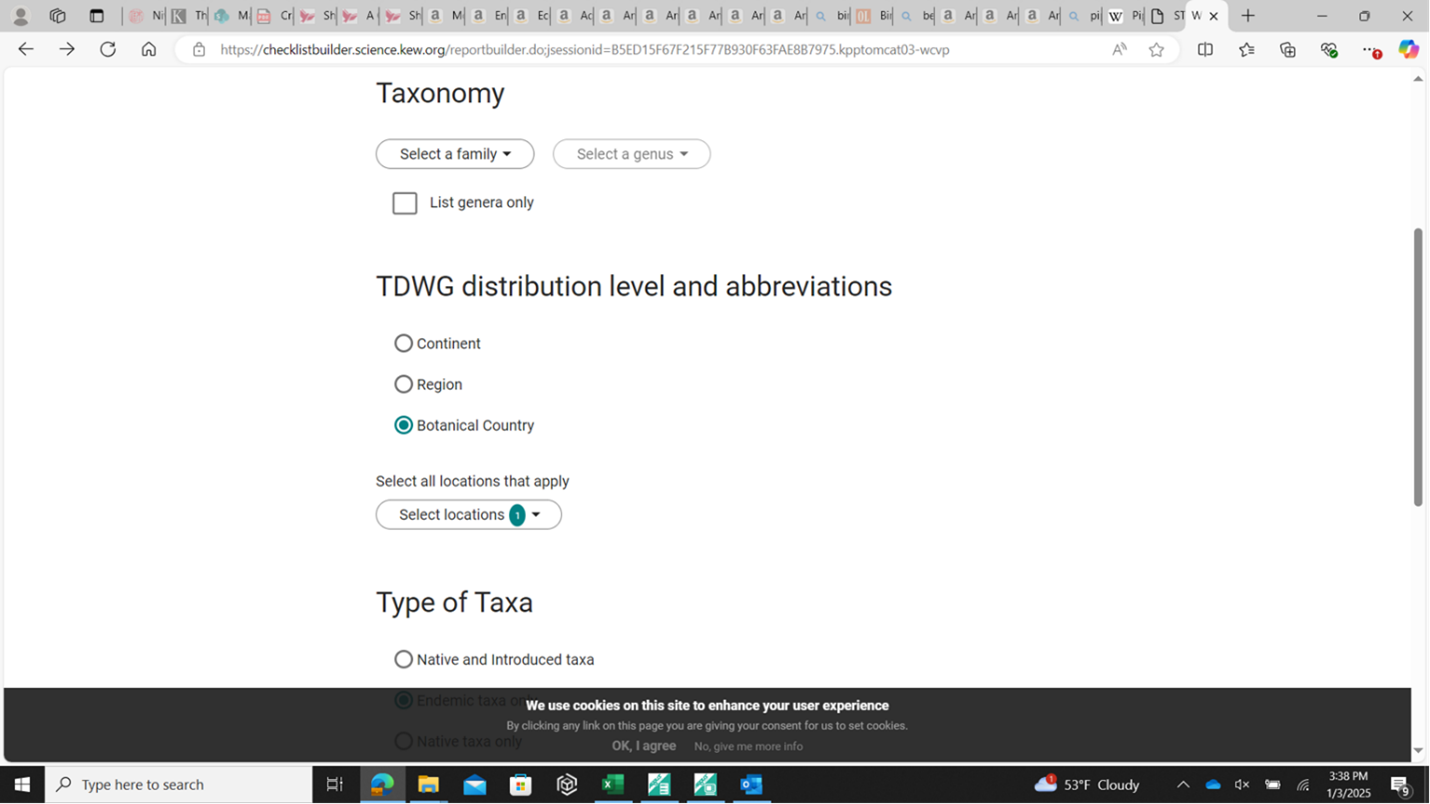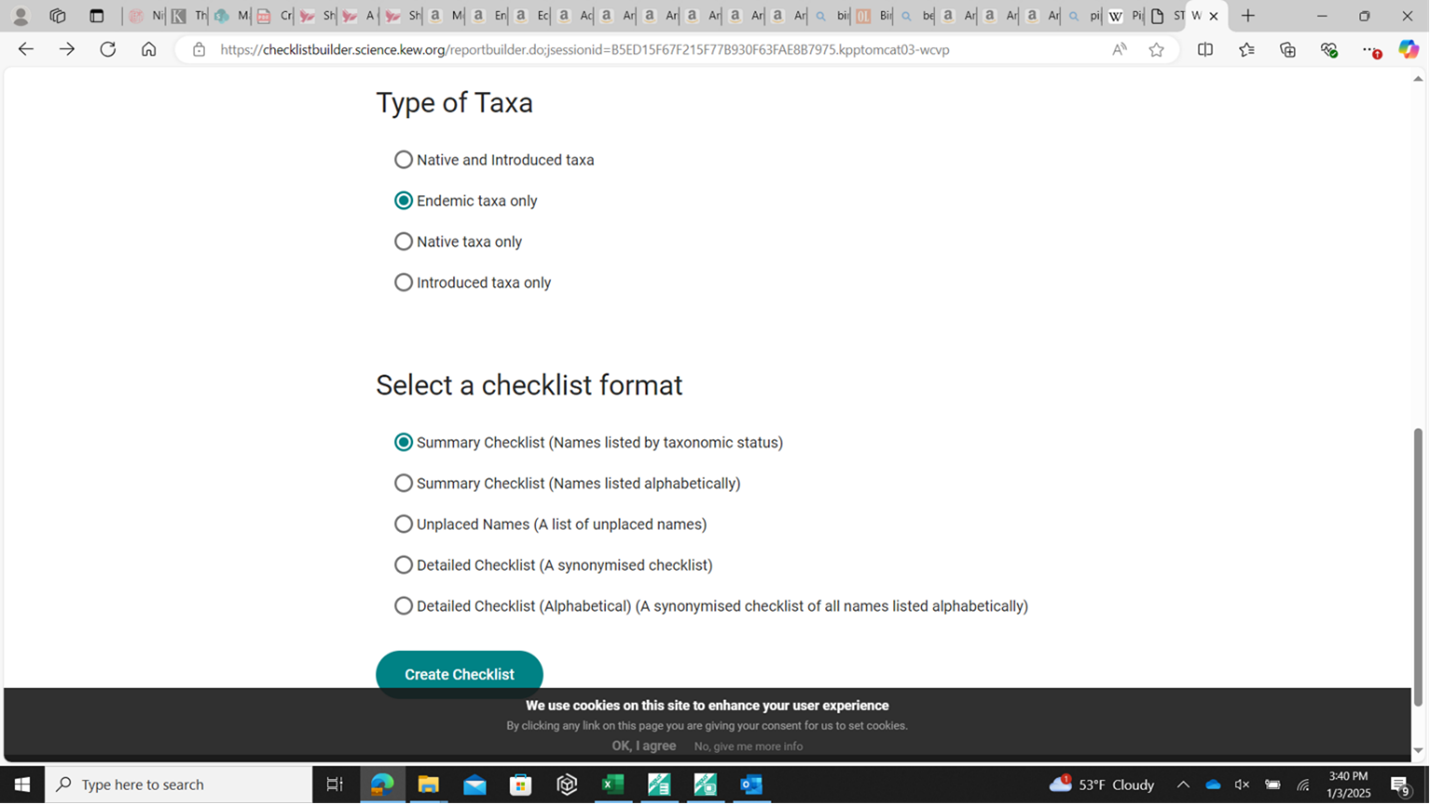Challenge 5
Welcome to the middle school challenge page for Challenge 5 of the Fairchild Challenge! Read below to find challenge information, entry requirements, resources and more for the challenge.
Challenge D: Botanical Sculptures
Title: "Bountiful Bouquets: Blossoms of the Jungle"
For individuals or Groups | Maximum points: 200
Due Date: Fri., March 21 by 5 p.m.
Download the Challenge 5 Rubric
Your Challenge:
This challenge invites you to discover the fascinating world of Panama’s native plants while using your creativity to make a meaningful and sustainable project. This winter, Phipps Conservatory is transitioning out of Tropical Forest Hawaii and into Tropical Forest Panama! Panama is home to an incredibly rich variety of plants due to its diverse climates and ecosystems. Your task is to design and create a 3D “bouquet” made of at least three flowering plants that are endemic or native to Panama—meaning they are only found in or originated in this country, respectively. But, instead of using real flowers, your 3D bouquet should be made entirely from recycled or reused materials.
Along with your bouquet, write a brief description of the plants you've chosen. Take time to research each one, exploring its native habitat, special features, and why it is important to Panama’s ecosystem. Consider how these plants contribute to the environment, from supporting local wildlife to maintaining the balance of the ecosystem. This research will help you better appreciate the importance of protecting Panama’s natural heritage. Lastly, dedicate your bouquet to a teacher or friend. Your project will not only showcase your artistic skills but also highlight your understanding of Panama’s incredible biodiversity.
Materials for the sculptures cannot be purchased new; they must be found at home/school, recycled, or purchased from a secondhand store – we highly recommend visiting the Pittsburgh Center for Creative Reuse for a wide variety of sculpture-crafting materials! (Please do not use food or living materials). Along with each sculpture, please submit a photo of the designer(s) and a description. The description should include:
- A bio for each designer (name, grade, school, and tell us a little bit about yourself and your interests)
- The materials you used, and where they came from
- A brief summary of the plants included in your bouquet (are they native, endemic? What are their scientific names? Where in Panama are they located? Do they have any unique or interesting traits?) 50-250 words.
- A dedication
Select sculptures from this challenge will be featured in Phipps’ 2025 summer show – Jungle Quest. Therefore, each sculpture MUST be original, and include a photo and description. A very limited number of well-made sculptures will be displayed.
Entry Requirements: Deliver to the high school programs coordinator at Phipps in person or via certified mail (electronic submission is not accepted):
- Challenge Entry Form
- A “bouquet” sculpture created using found, recycled, or thrifted materials (NO LIVE PLANT MATERIAL OR GLITTER)
- Sculptures should be creative, well-constructed, and COLORFUL!
- Sculptures must be 3D and no larger than 2ft by 2ft and free standing
- Descriptions including designers’ bios, inspirations, materials and their source, and how it was constructed
- Include the school name and the participating students’ names.
School Submits: Challenge Entry Form, 3 sculptures MAXIMUM, photo of designer(s), description/bios.
Address:
Phipps Conservatory and Botanical Gardens
The Fairchild Challenge c/o Alyssa Mulé
One Schenley Park
Pittsburgh, PA 15213
Resources: The following list of online resources may be used when preparing your entry:
- KIDS NATIONAL GEOGRAPHIC: Panama
- Flora of Panama on JSTOR
- Discover AMIGOS: The Orchids of Panama - Amigos de las Americas
- Search for ALL plants: STRI Research Portal Inventory Projects
- Plants of the World Online | Kew Science
- Then select Data -> build a checklist.
You do not have to specify a family or genus, but you will need to specify the botanical country (Panama):

The type of taxa you are interested on (endemic only) and how you want the information displayed:

Then hit create checklist and wait a bit while it builds the checklist. You can then use the species names you find in there to do specific searches in plants of the world.
- 3.1.6.A1 Describe the similarities and differences of major physical characteristics in plants, animals, fungi, protists, and bacteria.
- 3.1.6.A5 Describe basic structures that plants and animals have that contribute to their ability to make or find food and reproduce.
- 3.1.6.C1 Differentiate between instinctive and learned animal behaviors that relate to survival.
- 4.4.6.A Explain how different plants and animals in the United States have specific growing requirements related to climate and soil conditions.
- 4.5.6.D Identify reasons why organisms become threatened, endangered, and extinct.
- 3.1.7.A1 Describe the similarities and differences of physical characteristics in diverse organisms.
- 3.1.7.A3 Explain why the life cycles of different organisms have varied lengths.
- 3.1.7.B1 Explain how genetic instructions influence inherited traits. Identify Mendelian patterns of inheritance.
- 3.1.7.B5 PATTERNS
- Compare and contrast observable patterns in the physical characteristics across families, strains and species.
- 3.1.7.C1 Describe how natural selection is an underlying factor in a population’s ability to adapt to changes.
- 3.1.7.C2 Explain why the extinction of a species may occur when the environment changes.
- Explain that mutations can alter a gene and are the original source of new variations in a population.
- 3.1.7.C3 CONSTANCY AND CHANGE
- Identify evidence drawn from geology, fossils, and comparative anatomy that provides the basis for the theory of evolution.
- 4.1.7.A Describe the relationships between biotic and abiotic components of an ecosystem.
- Compare and contrast different biomes and their characteristics
- Describe symbiotic and predator/prey relationships
- 3.1.8.A8 CHANGE AND CONSTANCY
- Explain mechanisms organisms use to adapt to their environment.
- 3.1.8.C1 Explain how reproductive success coupled with advantageous traits over many generations contributes to natural selection.
- 4.1.8.D Use the theory of natural selection to examine the causes and consequences of extinction.


